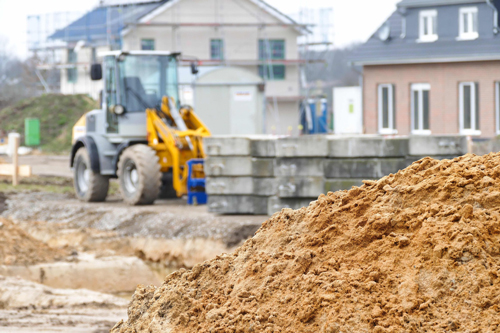It’s time that sand, as one of our key natural resources, was elevated in our consciousness beyond a local development issue and onto a national and international natural resource risk register, reports Ian Selby
Selby, I., It’s time to take notice of sand.
Geoscientist 29 (6), 24-25, 2019
https://doi.org/10.1144/geosci2019-035;
Download the pdf here

Our civilisation is built on sand. Little has changed over the past few thousand years and today sand still forms the foundations integral to life, providing us with basic requirements of shelter and infrastructure everywhere in the world. Until the last few years, sand resources have largely been assumed to be infinite and rarely made the news. Now there is a growing recognition that our consumption of sand—perhaps at 20 billion tonnes per year—may not be sustainable everywhere under the present-day supply regime, resulting in some lurid headlines suggesting that across the planet we are running out of sand.
A meeting held in London in January 2019 entitled ‘Sand and the Sandbank: is sand extraction a sustainable business?’ (
https://www.geolsoc.org.uk/GSL-Sand-and-the-sandbank) took a global view of natural sand resources, demand, uses and governance. The underlying question the meeting addressed was: How confident are we that sand, which has always been available in the past, will continue to be readily accessible in the future and be economically and environmentally acceptable to extract? The discussions made it clear that the risks surrounding the sustainable supply of natural sand should be considered globally, while recognising that there is significant variation between countries in the scale and location of the risk and its potential mitigation.
Multi-use
Annual sand usage may be as high as 2 tonnes for each person in the world, making sand the largest material flow globally. By far the largest use of natural sand (and the significant volumes of sand made through crushing rock) is as an aggregate in concrete for construction. Sand is mixed with gravel (at a ratio of around 40/60) and cement to make concrete. Particular variations of natural sand are also used in specialist applications including glass production, foundry moulds and proppants.
Marine sands are utilised in 2 main ways – firstly to create land as part of reclamation projects for coastal communities and ports, with volumes for individual schemes sometimes exceeding 200 million tonnes. Examples of large developments include Singapore’s port facilities, Chek Lap Kok airport in Hong Kong and Palm Island in Dubai. Secondly marine sand is also essential for beach nourishment, to help create resilient shorelines, because it provides a natural adaptation to climate change on the coast, protecting communities and infrastructure. Whilst annual global volumes pumped ashore currently lie at around 50 million cubic metres, an increase to 500 million cubic metres by 2050 is forecast as the impacts of sea-level changes intensify.
Continued growth
Demand for sand is fuelled by strong underlying trends in population growth, increasing urbanisation, economic growth and climate change, which has resulted in an upsurge in production over the last decade or two. Forecasts suggest these rates of growth will continue over the next few decades—there will be 3 billion more people in the world by 2100. During this time centres of population growth will change to include new areas of Asia, central Africa and South America. Concurrently urban population density is decreasing—we need more space, more buildings and more infrastructure.
The growth of China has been remarkable. China poured more concrete between 2011 and 2013 than the USA delivered in the entire last century and, despite slowing rates of growth, China increased its economy by more than the total economy of Australia in 2018. The world economy will double in size by 2042. The message here is that there are no signals to suggest the demand for sand will fall away in the next few decades. On the contrary, supply will have to significantly increase to support growth projections.
Embrace stewardship
What does this mean for natural sand resources, supplies and the impacts associated with its extraction? Sand is not rare, but it also not all the same. Certain types of sand can only be used for particular applications. The impacts associated with sand extraction are well understood and there are sensitivities around sourcing from certain environments. Clearly, looking ahead sand resources require management intervention as demand grows.
Despite a robust background understanding of the principles, the problem is broad: in most countries we don’t really know where sand resources lie, how much sand and what qualities are available and how much is being used. Policies are often absent or immature and associated with weak governance and regulation. In many parts of the world this leads to significant criminality. International trading in sand is limited at present, but growth in value may see an export business emerge.
The ways forward are clear. We must embrace an approach based on stewardship by growing understanding, actively sharing knowledge, and introducing strategic, sustainable resource management practices. Realistically this can only be achieved through the acquisition of reliable data. At the same time, we should explore and understand the scale and character of future demand. Despite press headlines, there isn’t a sand crisis. But we do need to take stock now and intervene to manage environmental impacts and avoid a market failure arising from a continued unsustainable development of sand resources.
Ian Selby is in the Sustainable Earth Institute at the University of Plymouth; e-mail: [email protected]
(Image: Pixabay.com)